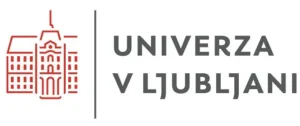News
Published conference contributions (invited lectures)
1. Peter Ropač, Urban Mur, Miha Ravnik, “Design of two-dimensional photonic crystals using geometry and self-similarity”, In: Emerging Liquid Crystal Technologies XVI, 6‐12 March 2021, CA, USA, (Proceeding of SPIE 11707), SPIE, 2021, 117070i.
2. Guilhem Poy, Slobodan Žumer, “Chirality-enhanced nonlinear optical response of frustrated liquid crystals”, In: Liquid Crystals XXV, 1‐5 August 2021, San Diego, CA, USA, (Proceedings of SPIE 11807), SPIE, 2021, 1180708.
3. Luka Mesarec, Wojciech Góźdź, Aleš Iglič, Veronika Kralj-Iglič, Epifanio Giovanni Virga, Samo Kralj, “Stability of normal red blood cells explained by membrane’s in-plane ordering”, In: Socratic lectures: 4th international minisymposium, Ljubljana, 11.‐12. December 2020, peer reviewed proceedings, Zdravstvena fakulteta Ljubljana, 2021, 21-27.
4. Samo Kralj, “Tekoči kristali: poligon osnovne fizike”, In: Znanstveno popoldne in 74. občni zbor DMFA Slovenije: 19. november 2021, DMFA – Založništvo, 2021, 9.
Published conference contributions
1. Bojan Cestnik, Andreja Abina, Rebeka Kovačič Lukman, Aleksander Zidanšek, “Expert system for systematic monitoring of sustainabilityrelated competences in higher education”, In: 16th Conference on Sustainable Development of Energy, Water and Environment Systems (SDEWES), 10‐15 October 2021, Dubrovnik, Croatia, Faculty of Mechanical Engineering and Naval Architecture, 2021.
2. Mitja Luštrek, Nina Reščič, Vito Janko, David Susič, Carlo De Masi, Aljoša Vodopija, Matej Marinko, Tea Tušar, Erik Dovgan, Matej Cigale, Anton Gradišek, Matjaž Gams, “Forecasting trends and optimizing the intervention plans against the COVID-19 pandemic: The XPRIZE competition and beyond”, In: IS 2021, Insieme Project Workshop, 5. October 2021, Ljubljana, Slovenia, Proceedings of the 24th International Multiconference Information Society, volume D, Institut “Jožef Stefan”, 2021, 52-55.
3. Zdenko Vuk, Jani Bizjak, Erik Dovgan, Matjaž Gams, Anton Gradišek, “An overview of the BATMAN platform”, In: IS 2021, BATMAN Project Workshop, 4. October 2021, Ljubljana, Slovenia, Proceedings of the 24th International Multiconference Information Society, volume J, Institut “Jožef Stefan”, 2021, 19-22.
4. Igor Muševič, Karthik Peddireddy, Maruša Mur, Khoa V. Le, Simon Čopar, Christian Bahr, Venkata Subba R. Jampani, “Self-shaping of liquid crystals into superstructures for photonic applications”, In: Emerging Liquid Crystal Technologies XVI, 6‐12 March 2021, CA, USA, (Proceeding of SPIE 11707), SPIE, 2021, 117070f.
5. Igor Serša, “Electric current detection by T2* relaxivity change: A Feasibility Study”, In: EMBEC 2020, 8th European Medical and Biological Engineering Conference, 29 November‐3 December 2020, Portorož, Slovenia, Proceedings, Springer, 2021, 470-477.… Read the rest “Published conference contributions”
Independent component part or a chapter in a monograph
1. George Cordoyiannis, Laure Bar, Patricia Losada-Pérez, “Recent advances in quartz crystal microbalance with dissipation monitoring: phase transitions as descriptors for specific lipid membrane studies”, In: Advances in biomembranes and lipid self‐assembly 34, Elsevier, 2021, 107-128.
2. Nina Kostevšek, Igor Serša, “Characterization of metal-based nanoparticles as contrast agents for magnetic resonance imaging”, In: Analysis and characterisation of metal‐based nanomaterials, (Comprehensive analytical chemistry 93), Elsevier, 2021, 303-343.
3. Apparao Gudimalla, Brigita Rožič, Samo Kralj, “Behavior of nanoparticles within liquid crystal phases”, In: Fundamentals and properties of multifunctional nanomaterials, (Micro and nano technologies series), Elsevier, 2021, 65-96.
4. Iztok Urbančič, B. Christoffer Lagerholm, Falk Schneider, “Fluorescence correlation spectroscopy”, In: Imaging modalities for biological and preclinical research. Volume 1, Ex vivo biological imaging, (IPEM-IOP series in physics and engineering in medicine and biology), IOP Publishing, 2021, i.8.b.
5. Serhii Ivanchenko, Saide Umerova, D. I. Baranovskyi, Aleksandr Nikolaevyč Kovalenko, Andrey Ragulya, “BaTiO3 films for multilayer devices by tape casting/perovskites and other framework structure materials”, In: Perovskites and other framework structure crystalline materials, (Artificially created materials and applications 1), Independently Published, 2021, 437-466.
Patents
1. Gregor Filipič, Kristina Eleršič, Darij Kreuh, Janez Kovač, Uroš Cvelbar, Miran Mozetič, A method of colouring titanium and titanium alloys, GB2530805 (B), Intellectual Property Office, 24. 11. 2021.
2. Janez Štrancar, Rok Podlipec, Iztok Urbančič, Zoran Arsov, Andrej Vrečko, Image‐processing apparatus and image‐processing method for detection of irregularities in tissue, EP3755994 (B1), European Patent Office, 26. 05. 2021.
3. Vid Bobnar, Barbara Malič, Aleksander Matavž, A method for producing polymeric surface modification layers, SI25887 (A), Urad RS za intelektualno lastnino, 31. 03. 2021.
Patent application
1. Martin Rigler, Viktor Pilko, Luka Drinovec, Griša Močnik, A heating chamber for measuring carbonaceous aerosol, and a device comprising said chamber, EP3832302 (A1), European Patent Office, 09. 06. 2021.
